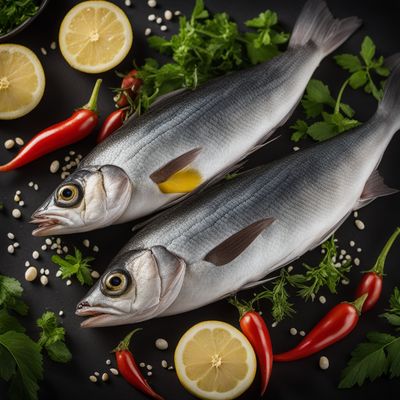
Ingredient
Diadromous fish
The Migratory Delicacy: Exploring the World of Diadromous Fish
Diadromous fish encompass a diverse range of species that undertake remarkable journeys between freshwater and saltwater environments. They exhibit distinct physical characteristics, such as streamlined bodies and powerful muscles, which enable them to navigate through different habitats. Diadromous fish have a firm and meaty texture, with flavors that range from mild and delicate to rich and robust, depending on the species. Their appearance varies, but they often have shiny scales and vibrant colors that add visual appeal to dishes.
Origins and history
The migration of diadromous fish has been observed and celebrated by cultures throughout history. These fish play a significant role in the ecosystems they inhabit and have been a vital food source for human populations living near rivers, lakes, and oceans. In many cultures, diadromous fish are deeply intertwined with local traditions, folklore, and culinary practices. They are often associated with abundance, fertility, and the changing seasons.
Nutritional information
Diadromous fish are a good source of high-quality protein, omega-3 fatty acids, and essential minerals such as calcium, phosphorus, and selenium. They are also low in saturated fat and contain vitamins B12 and D. The nutritional composition of diadromous fish can vary depending on the species and their diet. It is important to note that some species may contain higher levels of mercury or other environmental contaminants, so it is advisable to consume them in moderation and choose sustainably sourced options.
How to select
When selecting diadromous fish, look for fresh, whole fish with clear and bright eyes. The skin should be shiny and free from any discoloration or blemishes. The gills should be bright red or pink, indicating freshness. The flesh should be firm to the touch and have a mild, pleasant aroma. If purchasing fillets or steaks, ensure they are moist and have no signs of drying or discoloration. It is also important to consider the sustainability of the fish species and choose options that are responsibly sourced.
Storage recommendations
To maintain the freshness and quality of diadromous fish, it is best to consume them as soon as possible after purchase. If storing for a short period, place the fish in airtight containers or wrap them tightly in plastic wrap and store in the coldest part of the refrigerator. For longer-term storage, diadromous fish can be frozen. Wrap them tightly in plastic wrap or place them in freezer bags to prevent freezer burn. It is advisable to label the packages with the date of freezing to ensure proper rotation.
How to produce
Diadromous fish are primarily caught in the wild, but some species can be farmed in controlled environments. For amateur fishermen, catching diadromous fish requires knowledge of their migration patterns and habitats. It is important to follow local fishing regulations and guidelines to ensure the sustainability of fish populations. For those interested in fish farming, it is a complex process that requires specialized equipment and expertise.
Preparation tips
Diadromous fish can be prepared using various cooking techniques, including grilling, baking, broiling, poaching, or smoking. The choice of cooking method depends on the species and personal preference. For delicate fish like salmon or trout, grilling or baking can help retain their natural flavors. For richer-tasting fish like eel or lamprey, smoking or broiling can enhance their distinct flavors. Diadromous fish can be seasoned with herbs, spices, or citrus to complement their flavors. They can be served as a main course, incorporated into salads, or used in sushi and sashimi preparations.
Culinary uses
Diadromous fish are widely used in various culinary traditions around the world. They are often featured in dishes such as grilled salmon, smoked eel, trout almondine, or lamprey pie. In many cultures, diadromous fish are celebrated during specific seasons or festivals, where they are prepared in traditional ways. They can be used in soups, stews, curries, or as a filling for sushi rolls or fish tacos. Their versatility and distinct flavors make them a prized ingredient in both simple and elaborate dishes.
Availability
Diadromous fish are commonly found in regions with rivers, lakes, or coastlines that support their migration patterns. They can be found in countries such as the United States, Canada, Japan, Norway, and Australia. The availability of specific species may vary depending on the region and local fishing practices.




